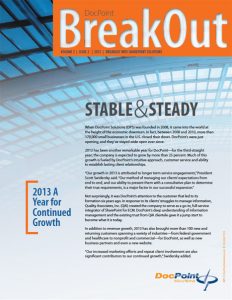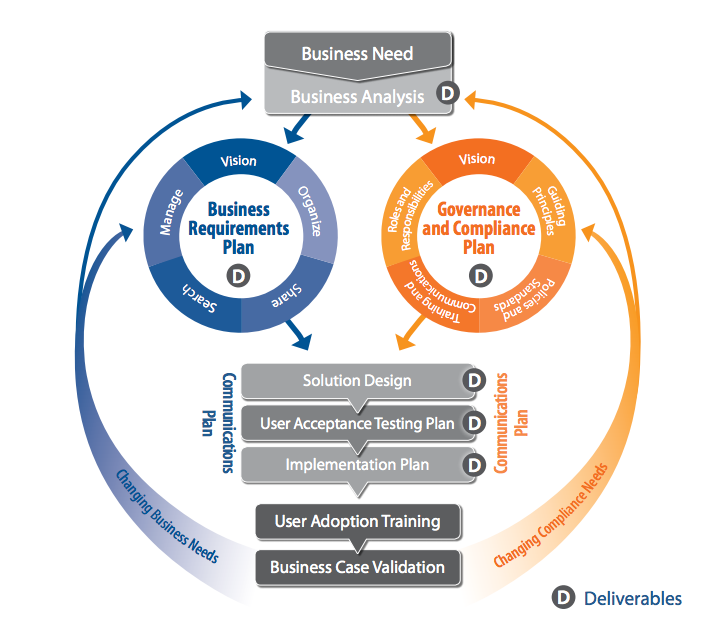As Microsoft SharePoint has evolved, the same is true for the challenges that adopters face. Now, many organizations are realizing that although SharePoint has solved their initial problems, they have not actually thought their ECM strategy all the way through. In order to address these issues for our customers and prospects as we continue to estab-lish ourselves as thought leaders in the ECM space, we created this powerful graphic illustrating our proven, unique approach to SharePoint solution design.
Beginning with the customer’s vision, we first perform a business analysis to determine how to best align the technology with the user’s end goals. Then, we formulate a plan—whether a business requirements or governance/compliance plan—which leads to solution design and implementation. Even though we follow the same basic formula for every project, it is important to note the fluidity of our model. Agile and scalable, a SharePoint solutions design strategy must have the flexibility to adapt to a shifting business environ-ment and changing company needs. Only then will customers realize the full benefits of their ECM investment, both short term and long term.
Business Requirements Plan:
Vision
- 2010/2013
- OnPrem/Cloud/Hybrid
- Intranet/Internet/Extranet/ECM
Organize
- Establish taxonomy/naming conventions
- Determine how existing/legacy data will migrate into sites (with metadata)
- Define project/community/social networking structure
Share
- Collaborate on content and projects
- Single content source with multi-thread links
- Develop adaptable and scalable social media plan
Search
- Quickly locate key project/document/financial information
-
Streamline internal and external communication strategies
- Optimize internal processes
Manage
- Control costs and shorten time to market
- Eliminate redundant information/processes/storage
- Increase business profitability
Governance and Compliance Plan:
Vision
- Clearly define business and governance objectives
- Describe value to the business and users
- Provide guidance and endorsement to achieve goals
Roles and Responsibilities
- Define how each individual employee ensures success
- Define hierarchy of authorization for policy creation
- Define roles and how they support policy creation and enforcement
Guiding Principles
- Define organizational preferences that support the vision
- Define the implications for each principle
- Continually encourage and reinforce guidelines
Policies and Standards
- Define best practices for use of SharePoint
- Follow legal/statutory/regulatory or organizational guidelines
- Clearly demonstrate penalties and enforcement for “non-compliance”
Training and Communications
- Make plans concise and manage expectations
- Use all means necessary to implement by thinking “out of the box”
- Constantly re-enforce and use new tools-social media/videos/etc.


